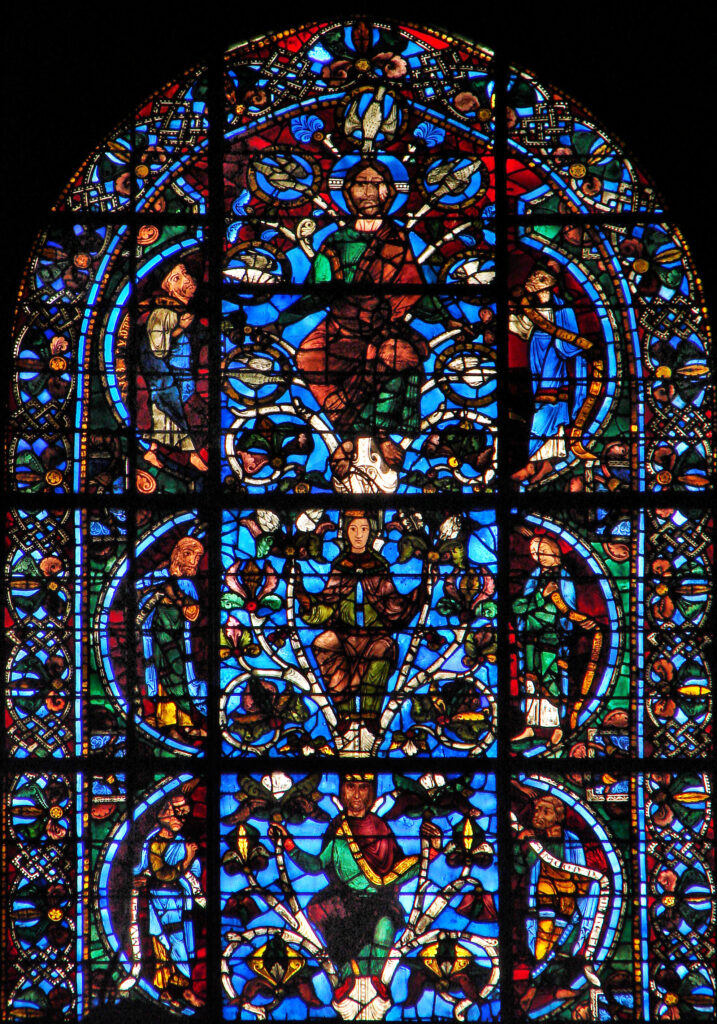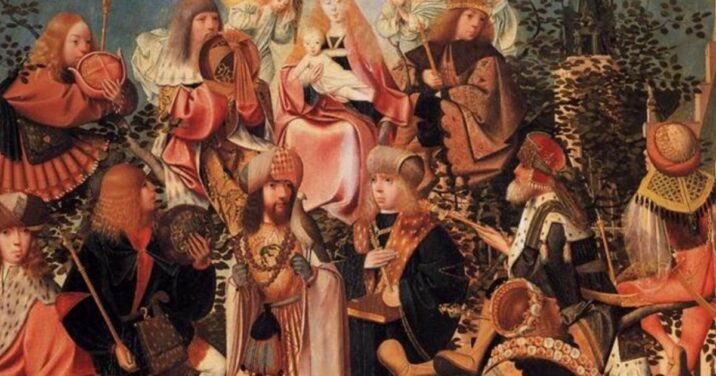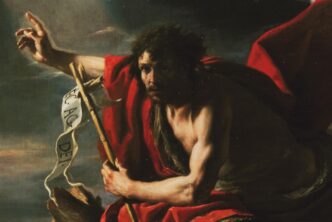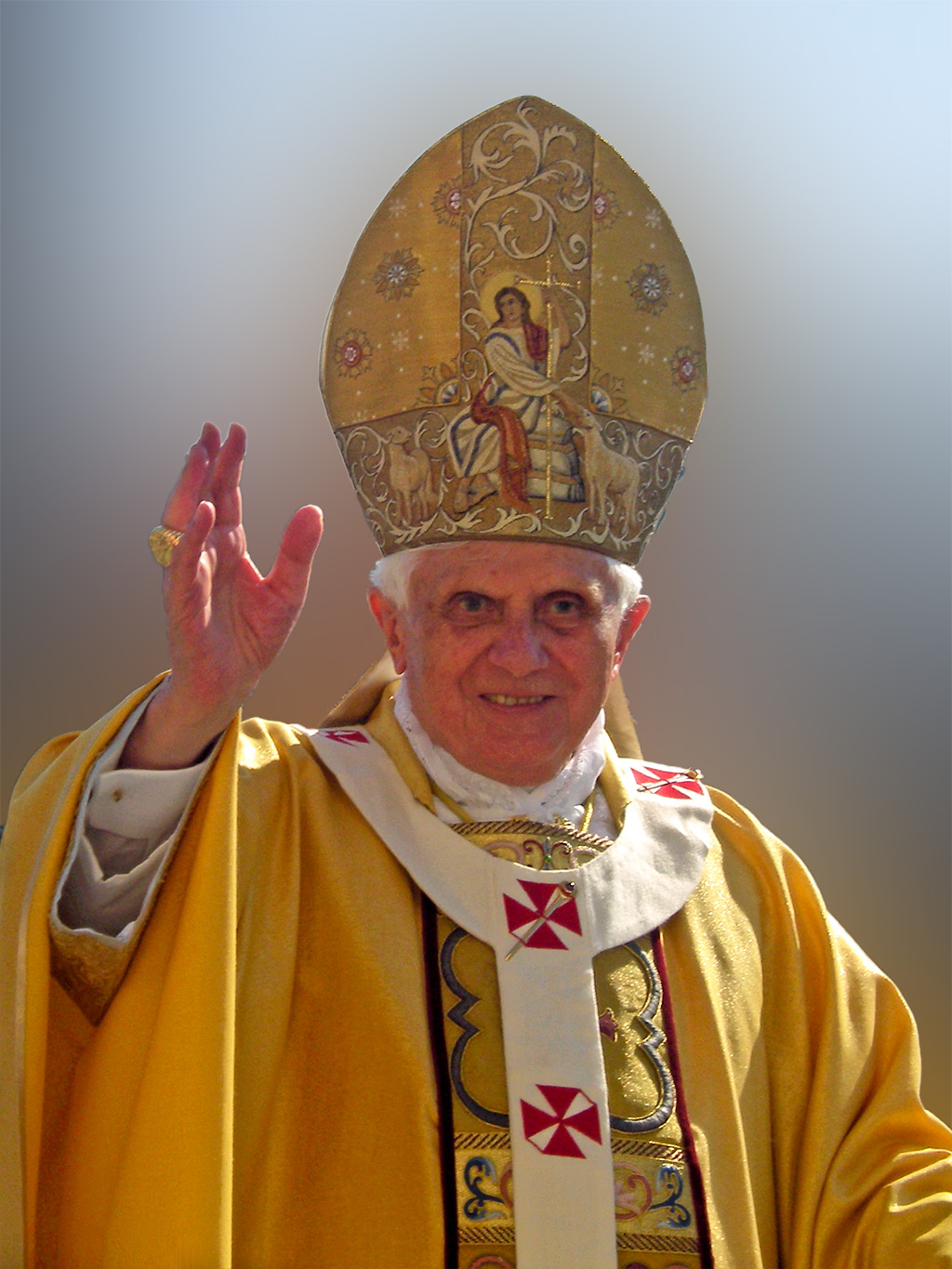The onset of the Advent season finds many Catholics seeking more regular and intentional spiritual disciplines. Some will begin the new liturgical year by taking up the Liturgy of the Hours, others will commit to a holy hour in front of the Blessed Sacrament, and still others will immerse themselves in God’s word daily, for man does not live on gingerbread alone.
One particular biblical devotion for Advent that has grown in popularity among Catholics is the Jesse Tree. The following article explores the deep roots of the Jesse Tree devotion in Sacred Scripture. In what follows, we begin by taking a deep dive into the Old Testament to look at the figure of Jesse. Who is he and why does he matter? We then turn to the prophet Isaiah to discover why the image of a tree is associated with Jesse. With this biblical foundation in place, we consider the Jesse Tree devotion to see how this Advent practice can help illuminate our imaginations and enkindle our hearts to prepare to celebrate the coming of Christ.
Jesse the Bethlehemite
Jesse is first mentioned by name in the Old Testament at the conclusion of the book of Ruth. There he is identified as the son of Obed and grandson of Boaz and Ruth. But more significant is the reason for his inclusion in a parting genealogical note in the text: Jesse is named as the father of David (Ruth 4:17, 22). The attentive reader will note that the first “appearances” of Jesse in the Old Testament are in the context of a family tree, and specifically the royal family tree associated with the future King David. It is precisely this family lineage from the end of the book of Ruth that Matthew the evangelist repeats in composing his extended genealogy of Jesus at the outset of his Gospel.1
While some might be more familiar with Jessie’s girl, it is in fact Jesse’s boy that the books of 1–2 Samuel are most concerned. As we walk canonically from Ruth into 1 Samuel, we finally encounter not only the name of Jesse but his very person and his family (cf. 1 Sam 16). After the multiple failures of King Saul, the Lord sends Samuel the prophet to the (little?) town of Bethlehem to anoint as king one of the sons of Jesse.
After Samuel invites him and his sons to the sacrifice, Jesse marshals his seven eldest sons one after another in front of the prophet, none of whom pass the divine echocardiogram. It is only when Jesse brings in his youngest son, David, from tending the sheep that the Lord affirms his kingly status, Samuel anoints the young man in front of his father and brothers, and the Spirit of the Lord rushes upon him. In this episode, we find Jesse to be a man docile and obedient to the word of God spoken through his prophet.
Further episodes recounted in the historical books confirm that Jesse’s importance to the biblical narrative is found precisely in his being father to King David. A few key passages suffice to make the point:
- King Saul requests Jesse to send David to him and then again to allow him to serve as his armor-bearer (1 Sam 16:18–23).
- Jesse is the aged father who sends David to his eldest three brothers who are serving King Saul in the war against the Philistines (1 Sam 17:12–20).
- Saul berates his son Jonathan for his fidelity to “the son of Jesse” (1 Sam 20:27–34).
- Sheba the Benjamite declares at the onset of his rebellion against the king, “We have no portion in David, we have no inheritance in the son of Jesse” (2 Sam 20:1).
- The northern tribes of Israel voice their rejection of the Davidic line—here, Rehoboam, son of Solomon—in identical words: “What portion do we have in David? We have no inheritance in the son of Jesse” (1 Kgs 12:16; 2 Chron 10:16).
These latter two examples are especially instructive, as they reveal how the phrase “son of Jesse” could function as a metonymy for the royal Davidic line and the Davidic kingdom. This point is essential to grasp as we turn to the book of Isaiah to discover how the image of a tree came to be associated with the figure of Jesse.
The (felled) tree of Jesse
A programmatic Messianic passage from the book of Isaiah provides the source text for the Jesse Tree:
There shall come forth a shoot from the stump of Jesse,
and a branch from his roots shall bear fruit.
And the Spirit of the Lord shall rest upon him,
the Spirit of wisdom and understanding,
the Spirit of counsel and might,
the Spirit of knowledge and the fear of the Lord.
And his delight shall be in the fear of the Lord.
He shall not judge by what his eyes see,
or decide disputes by what his ears hear, but with righteousness he shall judge the poor,
and decide with equity for the meek of the earth;
and he shall strike the earth with the rod of his mouth,
and with the breath of his lips he shall kill the wicked.
Righteousness shall be the belt of his waist,
and faithfulness the belt of his loins. …
In that day the root of Jesse, who shall stand as a signal for the peoples—of him shall the nations inquire, and his resting place shall be glorious. (Isa 11:1–5, 10)
In this memorable text from the prophet Isaiah, we encounter the Tree of Jesse, but only after it has been cut down. Isaiah speaks of “the stump of Jesse” (Isa 11:1) out of which a “shoot”/“branch” (11:1) or “root” (11:10) is said to grow. Isaiah quickly reveals that this sprout from Jesse’s stump is no mere outgrowth of stubborn foliage, but rather a messianic—that is, anointed—ruler, who like King David of old is marked by a special gift of the Lord’s own Spirit.
So what is the tree of Jesse and when and how did it become a stump? For Isaiah, the tree of Jesse is the royal Davidic line and the kingdom over which it ruled. Under David and Solomon, this was all twelve tribes (and some Gentile nations). From Rehoboam onward, this was the southern kingdom of Judah. In the late-seventh/early sixth century CE, this kingdom was overrun by the Babylonian empire. Nebuchadnezzar sacked Jerusalem and destroyed the Temple built centuries earlier by Solomon, son of David. That the tree of Jesse has been cut low and is now merely a stump is to acknowledge that the Davidic kingdom, sustained by a covenant sworn by the Lord (cf. 2 Sam 7; 1 Chron 17), has been brought low. But it is precisely this covenant, in which the Lord swore an everlasting throne to the son of David (cf. 2 Sam 7:13, 16), that gives hope for a messiah who will restore the kingdom. He is the shoot, the new David descended from Jesse, who will be a “signal for all peoples” (Isa 11:10).
Before moving on, it is worth noting the few instances in the New Testament where this arboreal image from the prophet Isaiah is taken up in relation to Jesus.
- St. Paul explicitly quotes Isaiah 11:10 in Romans 15:12 in the course of a litany of Old Testament passages brought forth to emphasize how Christ came not only for Jews, but “in order that the Gentiles might glorify God for his mercy” (Rom 15:9).
- Revelation speaks of “the Lion of the tribe of Judah, the Root of David” who “can open the scroll and its seven seals” (Rev 5:5).
- The concluding verses of Revelation contain the following declaration: “I, Jesus, have sent my angel to testify to you about these things for the churches. I am the root and the descendant of David, the bright morning star” (Rev 22:16).2
The Jesse Tree devotion
The Jesse Tree devotion, like the metaphorical tree of Psalm 1, is rooted in the pages of Sacred Scripture. As our survey of selected passages from the Old Testament has shown, the figure of Jesse is intimately tied in the biblical text to David his son. Jesse matters to the story of salvation history because his son David matters. The prophet Isaiah expressed great hope for the coming of a new David, a messianic king who would rule with righteousness. But he did so at a time when the tree of Jesse was nothing more than a stump—to all eyes it appeared cut down, dead, defeated.
This hope in the midst of uncertainty, confidence in the Lord’s promises in the midst of suffering, lies at the heart of the Jesse Tree devotion today. Every Advent, we are invited to enter imaginatively into the time before the coming of Christ. As Anglican priest and poet Malcolm Guite so beautifully expresses,
In another sense, Advent itself is always BC! The whole purpose of Advent is to be for a moment fully and consciously Before Christ. In that place of darkness and waiting, we look for his coming and do not presume too much that we already know or have it.3
The Jesse Tree invites us to meditate on key moments and figures from throughout the grand story of salvation history to see how God prepared the way for Christ and our salvation from “before the foundation of the world” (Eph 1:4). This unfolding of God’s providence through a particular human lineage tracing its roots back to the figure of Jesse is captured in many medieval depictions of the tree of Jesse. Perhaps best-known of all these artistic representations of the lineage of the Messiah is the stained glass window of the Tree of Jesse found at Chartres Cathedral.

This widespread tradition in the visual arts finds accompaniment in the realm of music in hymns such as the fifteenth-century German hymn, “Es ist ein Ros entsprungen” (better known to English speakers as “Lo, how a rose e’er blooming”), which also takes the prophecy of Isaiah 11 as its starting point. This hymn praises Mary as the rose who “from tender stem hath sprung” and who “bore to men a Savior.”
How to do the Jesse Tree devotion
There is no hard and fast set of particular episodes from Scripture that make up the Jesse Tree devotion. There is a certain degree of freedom to grow one’s own devotional practice over time. That being said, a survey of various Jesse Tree devotions yields a number of common elements worth noting.
- The devotion often begins with the stump of Jesse (that is, the prophecy of Isaiah 11) itself.
- The devotion then proceeds chronologically from the story of creation through various persons (Adam and Eve, Noah, Abraham, Isaac, Jacob, Moses, David, Solomon) and events (Fall, Passover/Exodus, construction of the Tabernacle, crossing the Jordan, building of the Temple, Exile and Return, etc.) that comprise the grand narrative of salvation history.
- In many iterations, a reading from Scripture is accompanied by a short reflection. Moreover, many versions of the Jesse Tree offer a visual accompaniment in the form of ornaments or symbols for each figure/event on each day of the Advent Season (for example, an image of the Ten Commandments to mark the giving of the Torah). This combination of word and image help to make the Jesse Tree devotion accessible to all ages.
In short, the Jesse Tree is “a chance to live out the waiting of God’s chosen people before the coming of the Messiah, and it helps us to appreciate how every moment in the story of salvation points ahead to Christ’s coming.”4
The practice of a Jesse Tree during Advent allows us to take a pilgrimage through the pages of Sacred Scripture to arrive again at the incarnation of the Word attested by the inspired words.
A few recommended resources
As the Jesse Tree has grown in popularity over the years, so have the number of resources dedicated to helping Christians integrate this spiritual practice into their Advent routine. The following are a few recommended resources for both newcomers to this Advent practice as well as seasoned Jesse Tree enthusiasts.
Rooted: Rediscover the Jesse Tree This Advent
This series by Dr. Scott Hefelfinger, professor of theology at the Augustine Institute, provides seven-minute daily videos exploring the biblical roots of the Catholic faith. While many Jesse Tree resources are made for families and children, this series is specifically geared to provide adults with a robust daily Advent devotional right to their inbox.
O Come, Emmanuel: Advent Reflections on the Jesse Tree for Families (book)
Kendra Tierney, well-known Catholic author and speaker about liturgical living, put out this resource with Emmaus Road Publishing in 2020. It provides full biblical texts, original illustrations, and a short meditation for each day from December 1 to 25. This text aims to be a resource for families making their way through Advent with a Jesse Tree.
Catholic Culture’s Jesse Tree (free pdf resource)
CatholicCulture.org has an extensive online guide to the Jesse Tree, featuring a brief history and how-to of this devotion, daily Scripture passages, and recommended passages from the Catechism. They also have a helpful pair of articles for parents looking to embark upon a Jesse Tree this Advent with their children: The Jesse Tree, Part 1: Relating the Old Testament to Children and The Jesse Tree, Part 2: Finding the Essential for the Family.
- Beginning with Perez the son of Judah, Matthew 1:3–6 matches name for name the patriarchal line through David listed in Ruth 4:18–22.
- It is intriguing to note how in the passages from Revelation, there is an explicit identification of root language with David (and not merely with his forebear, Jesse). Nonetheless, the indebtedness of these passages to Isaiah’s prophecy are readily apparent.
- Malcolm Guite, Waiting on the Word: A Poem a Day for Advent, Christmas and Epiphany (Norwich: Canterbury Press, 2015), 67.
- As articulated by Dr. Scott Hefelfinger in the first episode of his series on the Jesse Tree, Rooted.






